

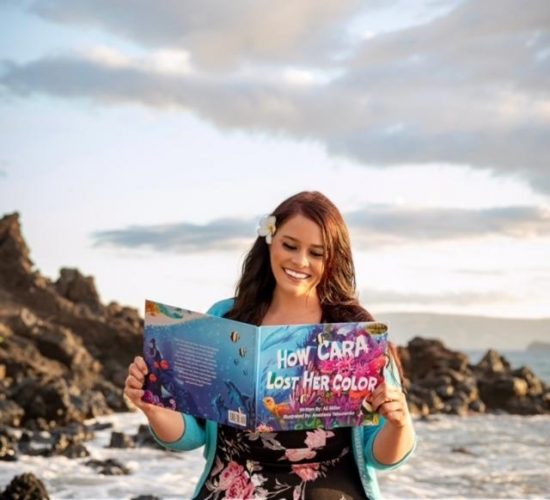
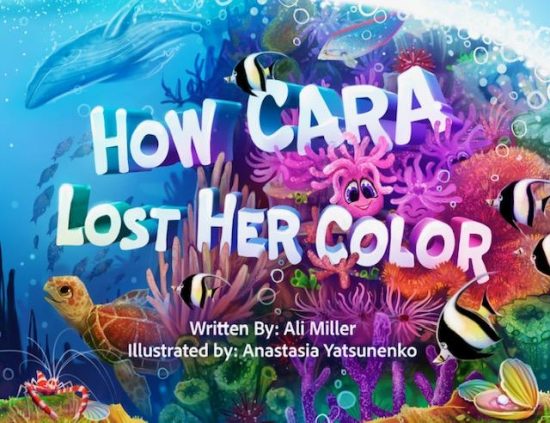
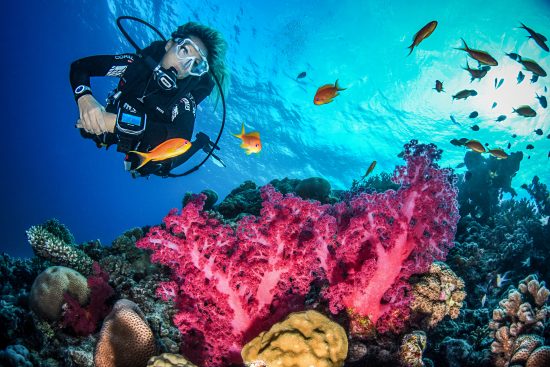
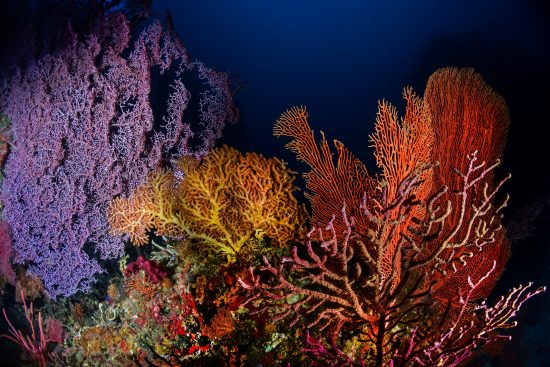
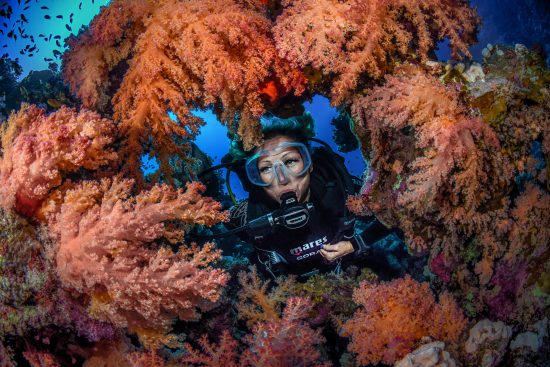
Ivana OK: What are you by profession?
I’m a marine naturalist. In a complete leap of faith, I moved to Maui from Reno, Nevada in August 2015 to follow my dreams and pursue an education in marine biology. That same year, coral reefs around the world were dying in what became the largest mass coral bleaching event in recorded history. I didn’t know that at the time.
Ivana OK: What role do corals play in the eco system?
Corals are the basis for all life in the ocean. The health and vitality of the ocean as a whole, is dependent on the health of its coral reef ecosystems. Although coral reefs account for less than 1% of the space in the ocean, they are home to about 25% of all marine species. Protecting these precious ecosystems is a crucial step in maintaining biodiversity. According to the Kumulipo, the ancient Hawaiian creation chant, corals were the first forms of life on Earth, creating a foundation for all other species.
Ivana OK: What was the path from a love for corals towards the beautiful children's book?
When I arrived on Maui, I saw the devastating impacts of climate change first hand as I studied local reefs. While completing class surveys to record coral cover and signs of bleaching, I saw large areas go from looking fairly healthy, to being completely dead within a couple of months.
While completing the UH program and working as a naturalist, I became determined to find a way to teach children about the effects of warming ocean temperatures. If they could understand, from an early age, what coral actually is and why it’s important, that knowledge could help them adopt sustainable practices into their lives as they grow up.
I love educating people about the ocean and seeing them get excited about conservation. One of the best things about working in marine science is inspiring people through education and seeing that spark turn into action. Creating this book was my way of giving back.
Art is one way to turn something heartbreaking into something inspirational. I’ve always loved writing, and I decided to create a children’s book that would allow kids to connect with corals as something more than just scenery. I spent about six months writing and four months working with Anastasia, the amazing illustrator. She did a wonderful job bringing the story to life so readers can feel like they are snorkeling in Hawaii as they turn each page. Anastasia Yatsunenko is from Kiev, Ukraine and completed the illustrations from her home there and parts of Israel.
Beautifully illustrated with colors inspired by Hawaiian reef fish, 'How Cara Lost Her Color' serves as an educational resource for parents and teachers. Through relatable characters and words that rhyme, children connect with corals as animals and learn how vital they are to all marine species.
In the story, Cara, the coral polyp, and her algae friend, Zoey, live happily alongside many other sea creatures who call the reef their home. But when human activity causes the ocean temperature to rise, Zoey must escape with her family and leave Cara behind. Can humans help bring Zoey back and save the reef?
Ivana OK: There are many divers around the world. What can we all do, as individuals, to save corals?
Humans can be the heroes in this story and in our own. There are many actions we can take to fight climate change today. If we collectively choose to act now, we can preserve the ocean and its remarkable inhabitants for generations to come.
For anyone who loves the ocean and wants to help protect the planet, there are many “small actions” that can have a HUGE impact. I’ve listed just a few ideas below.
Discover Ali's work here.
Written by Ivana OK and Ali Miller
Photos: Ivana OK, Janez Kranjc, Ali Miller archive
Illustration: Anastasia Yatsunenko
 Ivana and Janez
Ivana and Janez 10th December 2020
10th December 2020